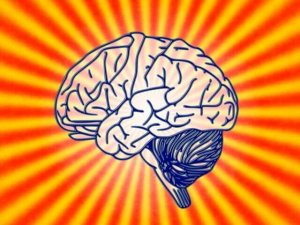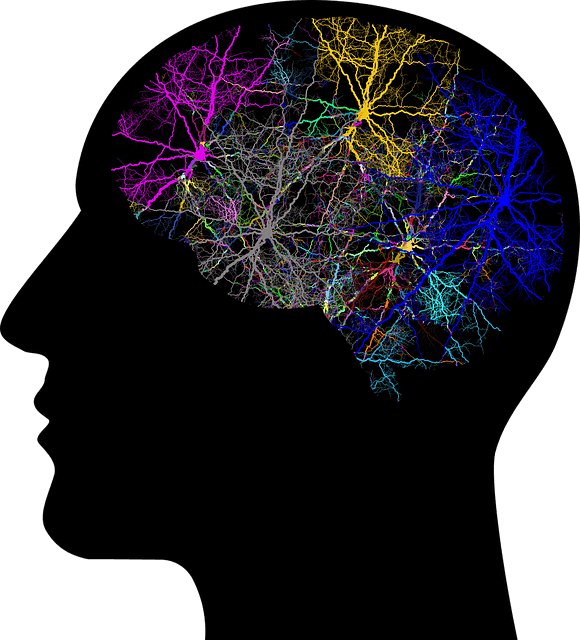What is Behavioral Neuroscience All About?

Behavioral neuroscience is a science that studies the biological foundations of human behavior. In other words, what biological systems and processes allow us to relate to one another in an active way, adapting to our surroundings.
According to behavioral neuroscience, behavior and mental processes are objective, verifiable, and measurable.
This vision of behavior does not take into account things like philosophy, religion, politics, etc. Rather, it focuses on the scientific method as a means of understanding human behavior. In this sense, it has much more in common with human ethology and psychology than these other fields.
Where did behavioral neuroscience come from?
In 1914, psychologist K. Dunlap first coined the term psychobiology in his work An Outline of Psychobiology. His purpose was to help students understand the role of biology in psychology. Today, the terms psychobiology, biological psychology, biopsychology, and psychobiology are synonyms of behavioral neuroscience.
From then on, several branches of investigation began which connect mental functions with physiological ones. New scientific journals came into existence that combine both sciences. These journals, including the Journal of Comparative Psychology y Behavioral Neuroscience, continue to have a great impact to this day.

Factors that influence human behavior
Behavioral neuroscience considers behaviors and mental processes to be adaptive processes of our species. According to this field of study, the adaptive processes are based on the following factors:
Phylogenetic factors
In order to comprehend behavior neuroscience, it’s important to know the evolutionary history of our species. The general characteristics of our behavior are influenced by our phylogenetics.
The field of phylogenetics studies the relationship or kinship between different species throughout our planet’s history. Today, these relationships are based on similar DNA, but, originally, this science used taxonomical characters in order to find similarities and differences among species.
Thanks to phylogenetics, we can discover the common ancestors that several species share. We can also discover when they began to differentiate from one another. The study of phylogenetic trees is an indispensable tool when it comes to explaining evolution.
Ontogenetic factors
Ontogenetics refers to the development of an organism starting with the embryonic process and continuing through all of the stages of its life, until old age. The ability to develop certain behavior starts from the time we are fetuses and becomes richer as we advance through life, interacting with our environment. These are the closest factors that explain the way we are.
Epigenetic factors
The field of epigenetics is gaining territory in the world of science. It aims to explain how external environmental factors mold our genetic expression. It seems that certain periods exist in the lives of human beings in which we have more neuroplasticity. In other words, periods in which our neurons can undergo changes in their morphology and physiology. These changes lead to consequences in our behavior and in our learning.

All of these factors are very important when it comes to understanding how human beings behave. Of course, there are other factors that also have a direct influence. For example, the perception of stimuli thanks to our nervous system, which prepares us to give an immediate response.
Behavioral neuroscience, besides having a strong influence on genetics, includes other scientific branches that aim to explain the biological foundations of human behaviors. Each branch looks at the issue from a different perspective, including molecular biology, endocrinology, pharmacology, embryology, and comparative psychology.
The most prominent subjects within behavioral neuroscience are the evolution of the brain, the functioning and development of the nervous system, sensory processes, sleep, emotions, and the most basic human behaviors, such as sex, hunger, thirst, aggression, etc.
Behavioral neuroscience is a science that studies the biological foundations of human behavior. In other words, what biological systems and processes allow us to relate to one another in an active way, adapting to our surroundings.
According to behavioral neuroscience, behavior and mental processes are objective, verifiable, and measurable.
This vision of behavior does not take into account things like philosophy, religion, politics, etc. Rather, it focuses on the scientific method as a means of understanding human behavior. In this sense, it has much more in common with human ethology and psychology than these other fields.
Where did behavioral neuroscience come from?
In 1914, psychologist K. Dunlap first coined the term psychobiology in his work An Outline of Psychobiology. His purpose was to help students understand the role of biology in psychology. Today, the terms psychobiology, biological psychology, biopsychology, and psychobiology are synonyms of behavioral neuroscience.
From then on, several branches of investigation began which connect mental functions with physiological ones. New scientific journals came into existence that combine both sciences. These journals, including the Journal of Comparative Psychology y Behavioral Neuroscience, continue to have a great impact to this day.

Factors that influence human behavior
Behavioral neuroscience considers behaviors and mental processes to be adaptive processes of our species. According to this field of study, the adaptive processes are based on the following factors:
Phylogenetic factors
In order to comprehend behavior neuroscience, it’s important to know the evolutionary history of our species. The general characteristics of our behavior are influenced by our phylogenetics.
The field of phylogenetics studies the relationship or kinship between different species throughout our planet’s history. Today, these relationships are based on similar DNA, but, originally, this science used taxonomical characters in order to find similarities and differences among species.
Thanks to phylogenetics, we can discover the common ancestors that several species share. We can also discover when they began to differentiate from one another. The study of phylogenetic trees is an indispensable tool when it comes to explaining evolution.
Ontogenetic factors
Ontogenetics refers to the development of an organism starting with the embryonic process and continuing through all of the stages of its life, until old age. The ability to develop certain behavior starts from the time we are fetuses and becomes richer as we advance through life, interacting with our environment. These are the closest factors that explain the way we are.
Epigenetic factors
The field of epigenetics is gaining territory in the world of science. It aims to explain how external environmental factors mold our genetic expression. It seems that certain periods exist in the lives of human beings in which we have more neuroplasticity. In other words, periods in which our neurons can undergo changes in their morphology and physiology. These changes lead to consequences in our behavior and in our learning.

All of these factors are very important when it comes to understanding how human beings behave. Of course, there are other factors that also have a direct influence. For example, the perception of stimuli thanks to our nervous system, which prepares us to give an immediate response.
Behavioral neuroscience, besides having a strong influence on genetics, includes other scientific branches that aim to explain the biological foundations of human behaviors. Each branch looks at the issue from a different perspective, including molecular biology, endocrinology, pharmacology, embryology, and comparative psychology.
The most prominent subjects within behavioral neuroscience are the evolution of the brain, the functioning and development of the nervous system, sensory processes, sleep, emotions, and the most basic human behaviors, such as sex, hunger, thirst, aggression, etc.
All cited sources were thoroughly reviewed by our team to ensure their quality, reliability, currency, and validity. The bibliography of this article was considered reliable and of academic or scientific accuracy.
- UNED. Fundamentos de Psicobiología.
- Universidad de Jaen. Concepto de psicobiología.
This text is provided for informational purposes only and does not replace consultation with a professional. If in doubt, consult your specialist.








